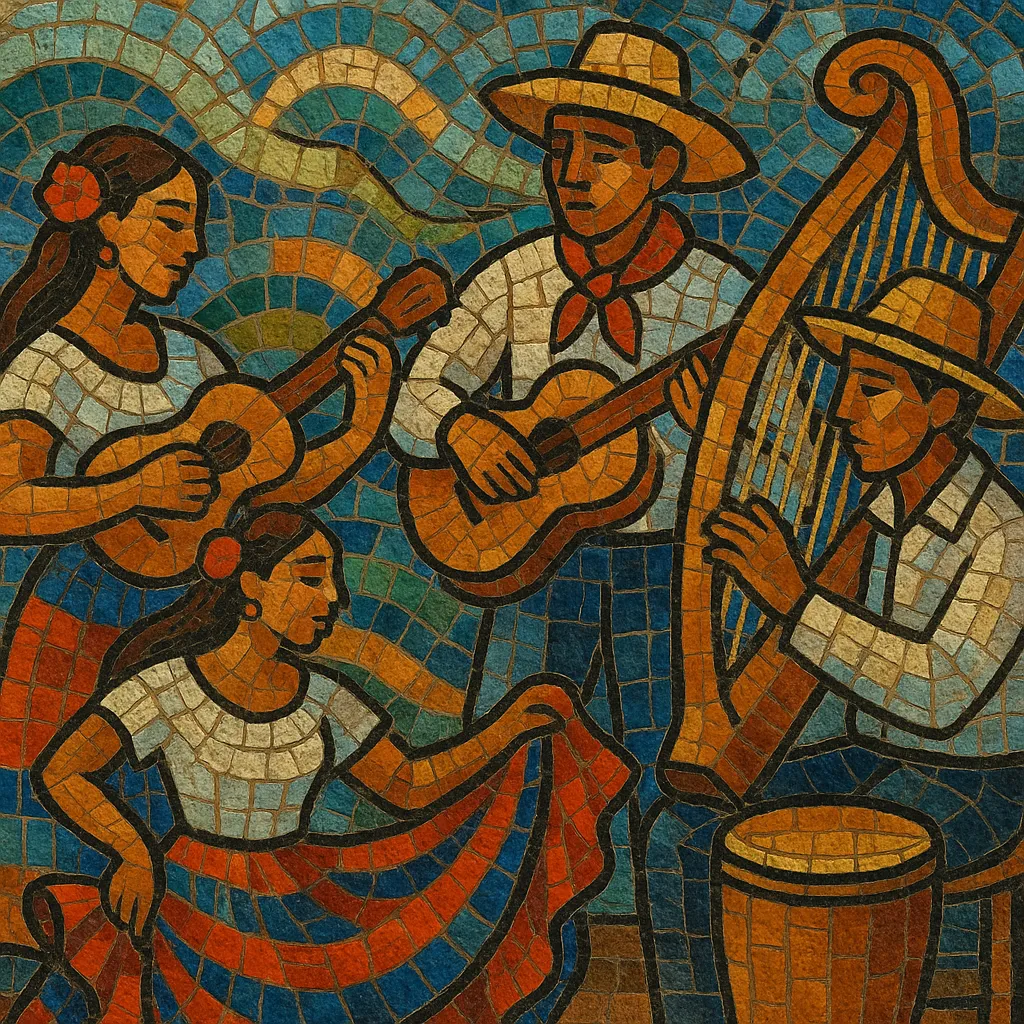Son jarocho is a traditional folk music and dance style from the Sotavento region of Veracruz, Mexico, shaped by the encounter of Spanish, Indigenous, and West African cultures.
It is performed at community gatherings called fandangos, where singers, dancers, and instrumentalists trade improvised verses and rhythms in a festive, call-and-response setting.
Its core sound blends strummed jaranas (small, re-entrant tuned guitars), the melodic requinto jarocho played with a plectrum, and the arpa jarocha (harp), supported by percussive zapateado dancing on a wooden platform (tarima). Additional timbres come from the quijada (donkey jawbone), pandero, and marimbol (bass lamellophone).
Sones such as La Bamba, El Siquisirí, El Colás, El Balajú, and El Cascabel feature hemiola (sesquiáltera) grooves that alternate between 6/8 and 3/4, décima-verse poetry, and a communal, improvisatory spirit.
Son jarocho crystallized in the 1700s in the Sotavento lowlands of Veracruz, where Spanish settlers, Indigenous peoples, and Afro‑descendant communities mingled through port trade along the Gulf of Mexico. Spanish dance‑song forms (fandango, seguidilla, jota), Baroque accompaniment practices, and décima poetry met Indigenous musical sensibilities and African rhythmic concepts, yielding the distinctive sesquiáltera swing (alternating 6/8 and 3/4) and the participatory fandango tradition.
Through the 19th century, son jarocho flourished in rural fiestas and coastal towns like Tlacotalpan and Alvarado. Early-to-mid 20th‑century radio and records spread emblematic sones such as La Bamba and El Cascabel beyond Veracruz via ensembles featuring arpa jarocha, jaranas, and requinto. Artists like Andrés Huesca helped bring the style to national audiences, while dance (zapateado on the tarima) remained central to the music’s percussive drive.
By the 1970s–80s, a community-led revival—anchored by tradition-bearers and groups such as Arcadio Hidalgo and Mono Blanco—re-energized local fandangos, taught younger generations, and documented regional repertoires. From the 1990s onward, cross‑border collaborations in Veracruz, Mexico City, and the U.S. (notably Southern California) expanded the scene. Annual gatherings like the Encuentro de Jaraneros in Tlacotalpan and initiatives such as the Fandango Fronterizo helped globalize the tradition while preserving its communal, improvisatory ethos.
Contemporary ensembles maintain core practices—décima improvisation, call‑and‑response singing, and the tarima’s percussive dance—while exploring new timbres and collaborations. Son jarocho now circulates in world music, folk, and Latin alternative circuits, yet remains rooted in community participation and local identity.


